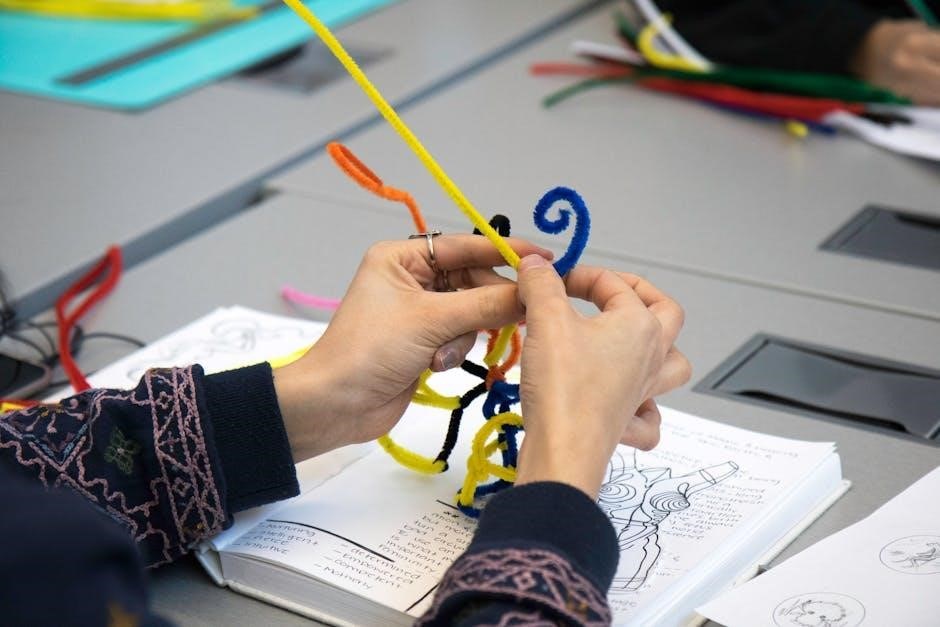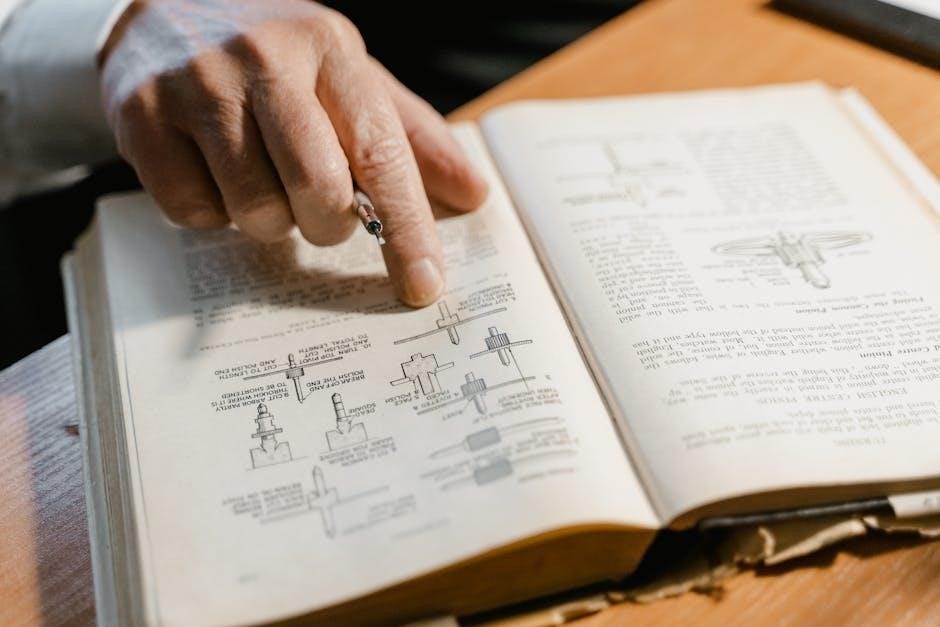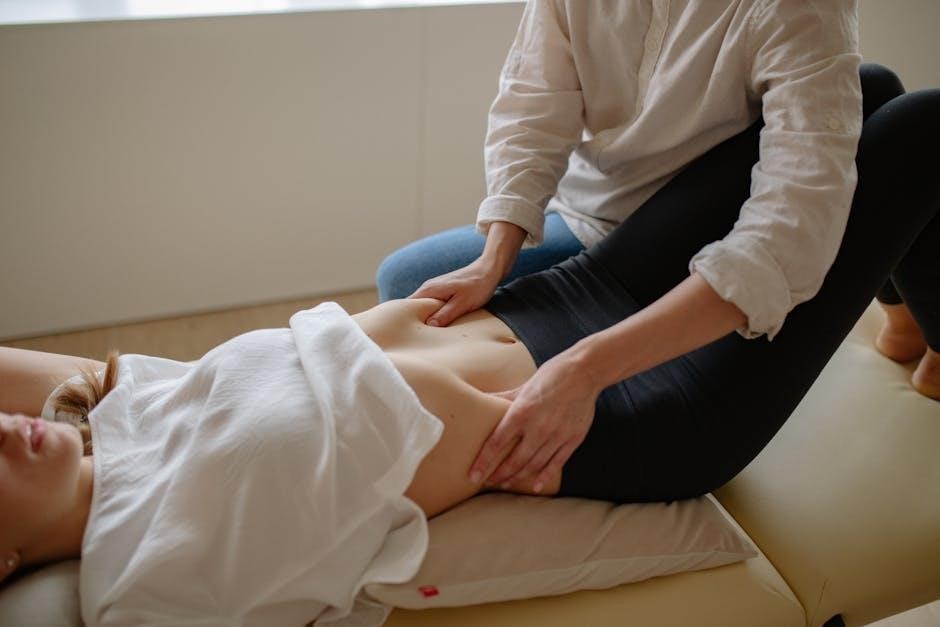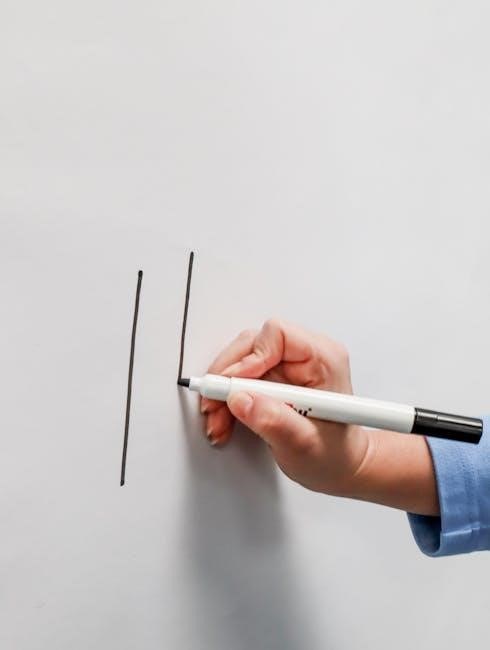A pressure cooker is a versatile kitchen appliance that uses steam pressure to cook food faster. It works by sealing food in an airtight design, allowing steam to build up and increase internal pressure, which accelerates cooking times. This efficient method preserves nutrients and flavors, making it a popular choice for home and professional use. Understanding its operation and benefits is essential for safe and effective cooking.
1.1 What is a Pressure Cooker?
A pressure cooker is a kitchen appliance designed to cook food faster by utilizing steam pressure. It works by sealing food and liquid in an airtight chamber, allowing steam to build up and increase internal pressure. This elevated pressure reduces cooking time while retaining flavors and nutrients. Available in electric and stovetop models, pressure cookers are versatile tools for preparing a variety of dishes, including meats, grains, and vegetables. Their ability to cook food up to 70% faster than traditional methods makes them a must-have for both home cooks and professional chefs. Understanding how a pressure cooker operates is the first step to unlocking its full culinary potential.
1.2 Benefits of Using a Pressure Cooker
Using a pressure cooker offers numerous benefits for home cooks and professionals alike. It significantly reduces cooking time, allowing for faster meal preparation while retaining flavors and nutrients. The sealed environment ensures even heat distribution, resulting in tender meats and perfectly cooked grains. Pressure cooking is also energy-efficient, as it requires less time and heat compared to traditional methods. Additionally, it’s ideal for cooking a variety of dishes, from soups to legumes, in a single pot. This versatility makes it a valuable addition to any kitchen. Finally, pressure cookers are cost-effective, as they reduce utility bills over time. By following the instruction manual, users can maximize these benefits and enjoy healthier, tastier meals with minimal effort.
1.3 Brief History and Evolution of Pressure Cookers
The pressure cooker has a rich history dating back to the late 17th century, when French physicist Denis Papin invented the steam digester, an early prototype. Its development evolved over centuries, with the first practical pressure cooker patented in the 19th century. Initially, these devices were cumbersome and posed safety risks due to limited control over pressure. By the mid-20th century, safer, more user-friendly models emerged, becoming a staple in kitchens worldwide.
In recent decades, the rise of electric pressure cookers has revolutionized cooking, offering digital controls and advanced features. Modern designs prioritize safety, efficiency, and versatility, making pressure cookers indispensable for home cooks and professionals alike. This evolution reflects ongoing innovations in technology and culinary practices, ensuring the pressure cooker remains a timeless kitchen essential.

Safety Precautions and Warnings
Always read the manual before use. Never leave a pressure cooker unattended or let children operate it. Avoid touching hot surfaces and ensure the valve is not blocked. Follow guidelines for liquid and food levels to prevent overpressure. Regularly inspect seals and gaskets for wear. Never force-open the lid while pressure is present. Use oven mitts or tongs to handle hot components. Keep the cooker on a stable, heat-resistant surface. Ensure proper ventilation and avoid overfilling. Follow all safety features and guidelines to prevent accidents and ensure safe operation. This will help maintain your safety and extend the lifespan of your pressure cooker.
2.1 Essential Safety Tips for First-Time Users
Before using your pressure cooker, thoroughly read the user manual to understand its features and operation. Always ensure the cooker is placed on a stable, heat-resistant surface. Never touch hot surfaces or attempt to open the lid while it is under pressure. Use the handles provided to avoid burns. Keep children away from the cooker while it is in use. Regularly inspect the gasket and valve for wear or damage. Avoid overfilling the cooker, as this can lead to blocked valves and safety hazards. Use the recommended liquid levels to prevent excessive pressure buildup. Never leave the cooker unattended during operation. Always follow the manufacturer’s guidelines for pressure release methods. By adhering to these safety tips, you can ensure a safe and enjoyable cooking experience with your pressure cooker.
2.2 Understanding Pressure Cooker Valves and Locks
Pressure cooker valves and locks are critical safety features designed to control and release steam pressure. The primary valve regulates pressure during cooking, while the safety valve acts as a backup to prevent excessive pressure buildup. Some models include a pressure relief valve for quick steam release. Locks ensure the lid remains securely closed until pressure is safely released. Always inspect these components before use to ensure they are clean and functioning properly. Regular cleaning prevents clogging, which can interfere with pressure regulation. Never force the lid open, as this can lead to accidents. Understanding how these mechanisms work is essential for safe and effective pressure cooking. Proper maintenance of valves and locks ensures longevity and reliable performance of your pressure cooker.
2.3 Common Mistakes to Avoid
When using a pressure cooker, avoid common mistakes to ensure safety and optimal performance. Overfilling is a major error, as it can block the steam release and cause explosions. Always leave at least an inch of space between food and the lid. Never open the lid while pressure is still present; always allow it to release naturally or via quick release. Ignoring preheating steps can lead to undercooked food. Using excessive liquid is another mistake, as it can dilute flavors and extend cooking times. Additionally, neglecting to read the manual or skipping safety precautions can result in accidents. Being mindful of these common pitfalls ensures a safe and successful cooking experience with your pressure cooker.
2.4 Safety Features in Modern Pressure Cookers
Modern pressure cookers are equipped with advanced safety features to prevent accidents and ensure safe operation. Key features include pressure relief valves, which automatically release excess steam to maintain safe pressure levels, and locking lids that prevent opening the cooker until pressure is fully released. Many models also include automatic shut-off, thermal protection, and sensors that detect imbalances in pressure or temperature. These features help prevent explosions, scalding, and other hazards. Additionally, modern designs often include fail-safes, such as mechanisms that stop cooking if the lid is not properly sealed. These safety innovations make pressure cookers both user-friendly and secure, reducing the risk of accidents and providing peace of mind for home cooks.

Assembling and Preparing Your Pressure Cooker
Unboxing and inspecting your pressure cooker ensures all parts are included and undamaged. Attach accessories like the sealing ring and lid securely. Clean thoroughly before first use.
3.1 Unboxing and Initial Inspection
When unboxing your pressure cooker, carefully remove all components and ensure no damage occurred during shipping. Check for the cooker base, lid, sealing ring, user manual, and any additional accessories like a steam rack or spoon. Inspect each part for signs of wear, cracks, or misalignment. Verify that the pressure valve and locking mechanism function smoothly. If any part is damaged or missing, contact the manufacturer immediately. Familiarize yourself with the pressure cooker’s features by reviewing the user manual, which outlines safety guidelines and operating instructions. A thorough inspection ensures safe and proper use of your pressure cooker. This step is crucial for first-time users to understand the appliance’s components and functionality.

3.2 Attaching Accessories (e.g., Sealing Ring, Lid)
Begin by attaching the sealing ring to the lid of your pressure cooker. Locate the groove on the underside of the lid and gently stretch the sealing ring into place, ensuring it fits snugly. Next, align the lid with the cooker base, making sure the locking mechanism or pins match up. Secure the lid by turning it clockwise until it clicks into position. Double-check that the sealing ring is properly seated to avoid leaks during cooking. For electric models, ensure all accessories are compatible and correctly fitted. Always refer to your user manual for specific instructions, as designs may vary. Properly attaching these accessories is critical for safe and effective pressure cooking, ensuring a tight seal and optimal performance.
3.3 Pre-Use Cleaning and Maintenance
Before using your pressure cooker, thoroughly clean all parts to ensure optimal performance and safety. Wash the lid, sealing ring, and base with warm, soapy water, paying attention to crevices where food particles may accumulate. For electric models, wipe the exterior with a damp cloth. Avoid using abrasive cleaners or scourers, as they may damage surfaces. Rinse all components and dry them with a clean towel to prevent water spots. Inspect the sealing ring for cracks or wear; replace it if necessary. Regular cleaning prevents clogging and ensures a tight seal. For stubborn stains or odors, mix equal parts water and white vinegar in the cooker and simmer for 10 minutes. Always sanitize your pressure cooker before and after use to maintain hygiene and longevity.

Operating Your Pressure Cooker
Operating a pressure cooker involves adding ingredients, securing the lid, and setting the cooker to the desired mode. Monitor pressure levels and cooking times carefully for optimal results.
4.1 Step-by-Step Guide to Cooking with a Pressure Cooker
Cooking with a pressure cooker is straightforward once you follow the proper steps. Begin by washing and preparing the cooker, ensuring all parts are clean and securely attached. Next, add your ingredients and liquids, making sure not to overfill the cooker. Secure the lid tightly, ensuring the valve is in the correct position. Set the desired pressure level and cooking time, either manually or using preset modes. Allow the cooker to build pressure before starting the timer. Once cooking is complete, release the pressure either naturally or via quick release, depending on the recipe. Finally, open the lid carefully and serve your perfectly cooked meal. Always refer to your manual for specific instructions tailored to your model. Practice makes perfect!
4.2 Understanding Pressure Settings and Modes
Pressure settings and modes are essential for achieving desired results when cooking. Most pressure cookers offer low, medium, and high-pressure settings, each suitable for different types of dishes. Low pressure is ideal for delicate foods like fish or vegetables, while high pressure is best for tougher meats or legumes. Many modern electric pressure cookers also feature preset modes for specific tasks, such as soups, grains, or yogurt-making. These modes automatically adjust pressure and cooking time for optimal results. Understanding these settings allows you to customize cooking to suit your recipe needs. Always refer to your cooker’s manual to explore the full range of options and ensure proper usage for various dishes. Experimenting with different settings and modes will help you master pressure cooking techniques.
4.3 How to Use the Timer and Delay Start Function
The timer and delay start function on a pressure cooker allow you to plan meals in advance, ensuring your dish is ready exactly when you need it. To use the timer, simply input the desired cooking time using the control panel. For the delay start, set the cooker to begin cooking at a future time, which is ideal for preparing meals that will be ready when you return home. Most models require selecting the delay start mode, setting the cooking time, and confirming the start time. Always ensure the cooker is properly sealed and filled with liquid before using these functions. This feature adds convenience, enabling hands-free cooking and perfectly timed meals. Refer to your manual for specific instructions, as controls may vary by model. Proper use ensures safe and efficient cooking. Experiment with these features to enhance your cooking experience.
4.4 Quick Release vs. Natural Release: What’s the Difference?
Understanding the difference between quick release and natural release is crucial for optimal pressure cooker use. Quick release involves manually opening the valve to rapidly release steam after cooking, ideal for delicate foods like vegetables or fish to prevent overcooking. Natural release allows the pressure to drop on its own, which can take 10-30 minutes, and is best for heartier dishes like meats or grains. Some recipes may require a combination of both methods. Always refer to your manual for specific guidance, as different models may have variations in release mechanisms. Proper use of these techniques ensures perfectly cooked meals and safe operation. Experiment with both methods to find what works best for your recipes.
4.5 Cooking Times for Common Foods
Cooking times in a pressure cooker vary depending on the food type and desired doneness. For example, chicken breasts typically take 8-12 minutes, while beans like lentils or chickpeas require 15-20 minutes. Rice cooks quickly, needing only 4-6 minutes, and vegetables like carrots or potatoes usually take 5-8 minutes. Meats like beef or pork may need 20-30 minutes for tender results. Eggs can be cooked to perfection in 5-7 minutes. Always consider the size and thickness of the food, as these factors affect cooking time. Use the quick release or natural release methods as appropriate for the recipe. Adjust times based on personal preference or quantity. Consult your manual for specific guidelines tailored to your pressure cooker model for optimal results. Proper timing ensures perfectly cooked meals every time.

Cooking with Your Pressure Cooker
Master your pressure cooker with step-by-step guides, tips, and recipes. Learn to cook meats, grains, and vegetables perfectly, and adapt traditional recipes for faster, flavorful meals.
5.1 Beginner-Friendly Recipes to Get You Started
Start your pressure cooking journey with simple, delicious recipes. Try classic chicken soup, where tender chicken and vegetables cook in just 15–20 minutes; Hard-boiled eggs are another easy option, ready in 5–10 minutes. For a hearty meal, prepare perfectly cooked rice or quinoa in under 10 minutes. These recipes are perfect for mastering basic techniques. Gradually experiment with more complex dishes like lentil stews or ground beef tacos. Always follow the manual for specific guidance and adjust ingredients as needed. These recipes will help you build confidence and explore the full potential of your pressure cooker. Remember to refer to your manual for precise instructions and cooking times to ensure the best results.
5.2 Tips for Converting Traditional Recipes to Pressure Cooker Recipes
Converting traditional recipes to pressure cooker recipes requires adjusting cooking times, liquid ratios, and understanding pressure settings. Start by reducing cooking time significantly, as pressure cookers work 2–3 times faster. Liquids should be minimized (about 1/4 of traditional amounts) to avoid over-pressure. Always refer to your user manual for specific guidelines. Use online communities or forums for troubleshooting and inspiration. Experiment with small batches to ensure flavors balance. Keep notes for future adjustments. Remember, practice makes perfect, so don’t be discouraged by initial trials. This method ensures faster, flavorful meals while retaining nutrients. Happy cooking!
5.3 Cooking Meat, Grains, and Vegetables: Best Practices
When cooking meat, grains, and vegetables in a pressure cooker, optimal results require attention to preparation and timing. For meat, searing before cooking enhances flavor. Grains like rice or quinoa typically need a 1:1 liquid ratio, while vegetables should be added according to their texture—delicate ones toward the end. Tough meats benefit from longer cooking times to tenderize. Use natural release for grains and meats to retain moisture. Always refer to your manual for specific guidelines. Experiment with seasonings and layering ingredients for depth of flavor. Adjust cooking times based on desired texture. Proper technique ensures perfectly cooked, nutritious meals every time. This approach maximizes the pressure cooker’s efficiency and versatility in the kitchen.
5.4 How to Avoid Overcooking or Undercooking
Avoiding overcooking or undercooking in a pressure cooker requires careful attention to cooking times and techniques. Start by consulting your manual for recommended durations for specific ingredients. Use the quick release feature to check food texture mid-cooking if needed. For meats, ensure internal temperatures meet safe guidelines. Vegetables should retain crispness unless a softer texture is desired. Grains like rice or quinoa benefit from natural release to prevent mushiness. Adjust seasoning post-cooking to avoid over-seasoning during the pressure phase. Monitor liquid ratios to avoid scorched bottoms. Always test food for doneness before serving. Proper timing and technique ensure perfectly cooked meals without overcooking or undercooking. This method guarantees consistent results and enhances your pressure cooking experience.

Maintaining Your Pressure Cooker
Regularly clean the pressure cooker, replacing worn parts like sealing rings and gaskets. Store it dry to prevent rust and ensure longevity. Proper maintenance enhances performance and safety.
6.1 Regular Cleaning and Sanitizing

Regular cleaning and sanitizing are crucial for maintaining your pressure cooker’s performance and hygiene. After each use, wash the inner pot, lid, and gasket with warm soapy water. Avoid using abrasive cleaners or scourers that may damage the surfaces. For electric models, wipe the exterior with a damp cloth and ensure all parts are dry before storage. Sanitize by rinsing with vinegar solution or running a steam cycle if available. Regularly check and clean the pressure valve and steam vent to prevent clogs. A clean pressure cooker ensures safe, efficient cooking and prevents food residue buildup, which can affect taste and functionality over time.
6.2 Replacing Worn-Out Parts (e.g., Sealing Ring, Gasket)
Regularly inspect and replace worn-out parts like the sealing ring and gasket to ensure proper function. Over time, these components can degrade, leading to leaks or failure to build pressure. To replace the sealing ring, turn off and unplug the cooker, let it cool, then detach the lid. Remove the old ring and inspect for cracks or damage. Insert the new ring, ensuring it fits snugly. For the gasket, follow similar steps, making sure it aligns correctly. Some parts may need periodic cleaning rather than replacement. Always refer to your manual for specific instructions, as procedures vary by model. Regular inspections and timely replacements are key to maintaining your pressure cooker’s efficiency and safety.
6.3 Storage Tips to Prolong Lifespan
Proper storage is crucial to extend the life of your pressure cooker. After cleaning, ensure all parts are completely dry to prevent rust or mold. Store the cooker in a cool, dry place away from direct sunlight. Avoid stacking heavy objects on top of it, as this could cause damage. For electric models, disconnect the power cord and wrap it neatly to avoid tangling. Dismantle and store removable parts like the sealing ring and gasket separately in airtight containers. Never store food in the cooker, as residues can attract pests. Regularly inspect stored parts for signs of wear or damage and replace them as needed. By following these steps, you can maintain your pressure cooker’s condition and ensure it remains functional for years to come.

Troubleshooting Common Issues
Common issues include the cooker not building pressure, leaks, or noisy operation. Check the sealing ring and gasket for damage, ensure the lid is properly aligned, and verify the pressure valve is clean and unobstructed for optimal performance.
7.1 Why Your Pressure Cooker Isn’t Building Pressure
If your pressure cooker isn’t building pressure, it could be due to a faulty or worn-out sealing ring, improper lid alignment, or a clogged pressure valve. Check the gasket for cracks or damage and replace it if necessary. Ensure the lid is securely locked and aligned correctly. Clean the pressure valve regularly to remove food residue or debris that might block steam from escaping. Additionally, insufficient liquid in the cooker can prevent pressure from building, so always follow the recommended water levels. If issues persist, consult your user manual or contact customer support for further assistance. Regular maintenance and inspections can help prevent these problems and ensure optimal performance.
7.2 Fixing Leaks or Noisy Operation
If your pressure cooker is leaking or operating noisily, it may indicate worn-out or misaligned parts. Inspect the sealing ring and gasket for cracks or damage; replace them if necessary. Ensure the lid is properly aligned and tightened. Noise often results from steam escaping due to a faulty valve or blockages. Clean the pressure release valve and surrounding areas to remove food particles. Check for loose connections or joints and tighten them securely. If leaks persist, verify that all components are in good condition and correctly assembled. Regular maintenance, such as replacing worn seals and cleaning the valve, can prevent these issues. Consult your user manual for specific guidance on troubleshooting and repairing your model.
7.3 Solving Common Error Codes (for Electric Models)

Electric pressure cookers often display error codes to indicate specific issues. For example, an “E1” code may signify overheating, while “E2” could point to a lid alignment problem. If you encounter an error, first unplug the device and let it cool. Check the user manual for code definitions specific to your model. Common issues include faulty sensors, blocked valves, or malfunctioning heaters. Clean the pressure release valve and ensure the lid is properly sealed. If the issue persists, reset the cooker or perform a factory reset. For complex problems, contact customer support or refer to online troubleshooting guides. Regular maintenance, such as cleaning sensors and checking connections, can help prevent errors and ensure smooth operation.
Mastering your pressure cooker unlocks faster, flavorful cooking. For further learning, explore online forums like hippressurecooking.com, manufacturer websites, and detailed user manuals for enhanced cooking experiences.
8.1 Final Tips for Mastering Your Pressure Cooker
To truly master your pressure cooker, start by familiarizing yourself with its specific features through the user manual. Always adhere to safety guidelines, such as not leaving the cooker unattended and ensuring proper sealing. Experiment with recipes gradually, adjusting cooking times and liquid levels as needed. Regular maintenance, like cleaning and replacing worn parts, ensures longevity. For electric models, understand error codes and troubleshooting steps. Join online communities like hippressurecooking.com for expert advice and recipe ideas. Practice makes perfect, so keep exploring new dishes and techniques to maximize your pressure cooker’s potential in the kitchen.
8.2 Recommended Reading and Online Communities
Enhance your pressure cooker skills with recommended reading and online communities. Visit websites like hippressurecooking.com for expert tips and troubleshooting. Download manuals like the Presto Pressure Cookers Manual for model-specific guidance. Join forums such as the Pressure Cooking Recipes Facebook Group or Reddit’s r/pressurecooking for recipe sharing and advice. Explore cookbooks like “The Pressure Cooker Cookbook” by Bruce Weinstein for inspiration. These resources will help you optimize your pressure cooker’s performance and expand your culinary creativity.

